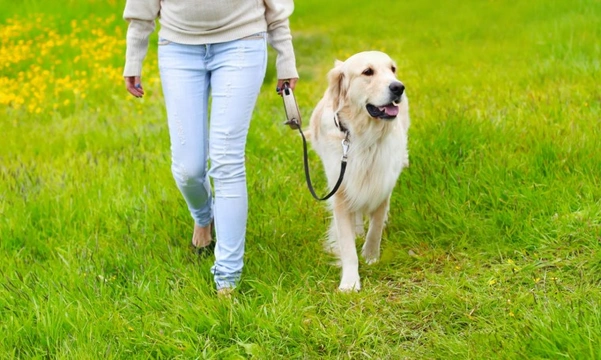
How do you walk a dog with arthritis?
Arthritis is a chronic inflammatory condition of the bones and joints, and one that affects many dogs – and people – to a certain degree as they get older.
Whilst arthritis is not exclusively a condition of old age and also, it comes in many different variants, all of which have a slightly different action and impact, it is a health condition that a lot of dog owners have to accommodate for when planning the care of their dogs when they reach maturity and eventually, their senior years.
It is important to work with your vet to manage your dog’s arthritis and keep them comfortable and as mobile as possible, and there is no one size fits all approach that is effective for every dog. Diet, medications, lifestyle changes and much more may be indicated for any given dog, or all of these things and others besides – but caring for a dog with arthritis can be challenging in terms of taking care of their day to day needs, and providing them with a natural and appropriate lifestyle.
When it comes to dogs with arthritis and their exercise, things can be a bit of a catch 22 – the more mobile your dog is, the more comfortable they will be, but when your dog’s arthritis is flaring up they are apt to be stiff, uncomfortable and potentially in pain too, and very unwilling to walk or exercise.
However, keeping your dog mobile for as long as possible without worsening their symptoms or distressing them can be a challenge – and so in this article, we will address the question of “how do you walk a dog with arthritis?” And share some advice and insights on how to make walking a dog with arthritis safe and comfortable for them. Read on to learn more.
The weather and temperature
First of all, cold weather conditions tend to make arthritis worse – and you cannot of course control the weather, but bear in mind that the temperature will affect how your dog copes, and take steps to lessen its impact.
When the weather is mild or warm, your dog will probably be equally happy to walk at any time of the day but in the winter, wait until the weather has warmed up as much as it is going to before you head out. Also, when the weather is cold, bundle your dog up to keep them warm and lessen the impact of the cold on their bones and joints, using coats and booties as needed to insulate them and make them more comfortable.
Warmups
Start your walk slow and allow your dog to get warmed up, stretching their muscles and legs slowly and gradually so that they don’t exert themselves or worsen any pain. Take the time to get your dog warmed up properly and the rest of their walk will be more comfortable, and it will also greatly reduce the chances of your dog getting injured or worsening their pain too.
Walking surfaces
Hard ground like pavements or baked earth are unforgiving, and jarring to the bones and joints, even when you’re just walking at a slow place. Avoid walking on surfaces that are very hard, and also surfaces that are unstable, like gravel or sand.
Instead, try to keep your dog on grass and softer surfaces to minimise the impact on their joints.
Inclines and steps
Try to avoid taking your dog up steep steps or inclines, particularly steps. Bear this in mind throughout your walk, even when only one step is involved – such as moving to a dropped kerb to cross the road rather than taking a larger step up and down.
Speed and pace
Take your cues from your dog’s own pace, and don’t try to push them to go faster than they are comfortable with. Your dog’s pace will usually gradually lengthen as your walk continues and the movement begins to loosen their joints, so expect your dog to be particularly slow at first.
Activities
Avoid anything high-impact like jumping, running or climbing unless your vet has said this is ok – even if your dog is having a good day, the result of impacts like these might come back to cause problems later on if your dog’s arthritis flares up later.
Monitoring how your dog is coping
If your dog is flagging, unhappy, uncomfortable, or their pace and enthusiasm is waning, it is time to think about heading for home. A walk done properly should ease your dog’s pain and symptoms, so if their pace is shortening or they’re becoming more unhappy as you go, that’s enough.
Keeping your dog at a healthy weight
If your dog is carrying excess weight, this will place more pressure on their bones and joints and worsen their arthritis symptoms. Look at the big picture and keep your dog at a lean weight to make their walks, and life in general, easier.
Accessories to help
Talk to your vet about remedial devices like slings and mobility aids for dogs that you might be able to use to help your dog to get around, or keep them moving on days when their arthritis is worse than usual. These aren’t indicated for all dogs, but can help to keep some arthritic dogs mobile and more comfortable for longer.
Alternatives to walking
Finally, ask your vet about ways in which you can provide exercise for your dog that doesn’t involve walking – like canine hydrotherapy. Hydrotherapy can provide great low-impact exercise for your dog that will make them feel a lot better and that can improve their general health and wellness.



